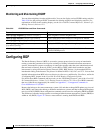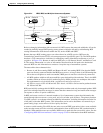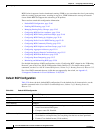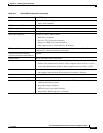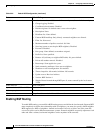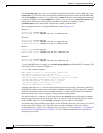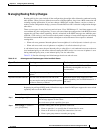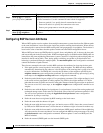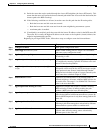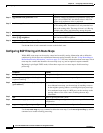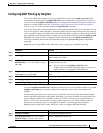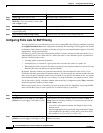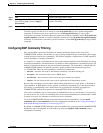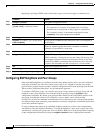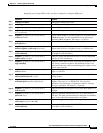
32-46
Cisco ME 3400 Ethernet Access Switch Software Configuration Guide
78-17058-01
Chapter 32 Configuring IP Unicast Routing
Configuring BGP
Configuring BGP Decision Attributes
When a BGP speaker receives updates from multiple autonomous systems that describe different paths
to the same destination, it must choose the single best path for reaching that destination. When chosen,
the selected path is entered into the BGP routing table and propagated to its neighbors. The decision is
based on the value of attributes that the update contains and other BGP-configurable factors.
When a BGP peer learns two EBGP paths for a prefix from a neighboring AS, it chooses the best path
and inserts that path in the IP routing table. If BGP multipath support is enabled and the EBGP paths are
learned from the same neighboring autonomous systems, instead of a single best path, multiple paths are
installed in the IP routing table. Then, during packet switching, per-packet or per-destination load
balancing is performed among the multiple paths. The maximum-paths router configuration command
controls the number of paths allowed.
These factors summarize the order in which BGP evaluates the attributes for choosing the best path:
1. If the path specifies a next hop that is inaccessible, drop the update. The BGP next-hop attribute,
automatically determined by the software, is the IP address of the next hop that is going to be used
to reach a destination. For EBGP, this is usually the IP address of the neighbor specified by the
neighbor remote-as router configuration command. You can disable next-hop processing by using
route maps or the neighbor next-hop-self router configuration command.
2. Prefer the path with the largest weight (a Cisco proprietary parameter). The weight attribute is local
to the router and not propagated in routing updates. By default, the weight attribute is 32768 for
paths that the router originates and zero for other paths. Routes with the largest weight are preferred.
You can use access lists, route maps, or the neighbor weight router configuration command to set
weights.
3. Prefer the route with the highest local preference. Local preference is part of the routing update and
exchanged among routers in the same AS. The default value of the local preference attribute is 100.
You can set local preference by using the bgp default local-preference router configuration
command or by using a route map.
4. Prefer the route that was originated by BGP running on the local router.
5. Prefer the route with the shortest AS path.
6. Prefer the route with the lowest origin type. An interior route or IGP is lower than a route learned
by EGP, and an EGP-learned route is lower than one of unknown origin or learned in another way.
7. Prefer the route with the lowest multi -exit discriminator (MED) metric attribute if the neighboring
AS is the same for all routes considered. You can configure the MED by using route maps or by using
the default-metric router configuration command. When an update is sent to an IBGP peer, the
MED is included.
8. Prefer the external (EBGP) path over the internal (IBGP) path.
Step 3
clear ip bgp {* | address |
peer-group-name} soft out
(Optional) Perform an outbound soft reset to reset the inbound routing table on the
specified connection. Use this command if route refresh is supported.
• Enter an asterisk (*) to specify that all connections be reset.
• Enter an IP address to specify the connection to be reset.
• Enter a peer group name to reset the peer group.
Step 4
show ip bgp
show ip bgp neighbors
Verify the reset by checking information about the routing table and about BGP
neighbors.
Command Purpose



